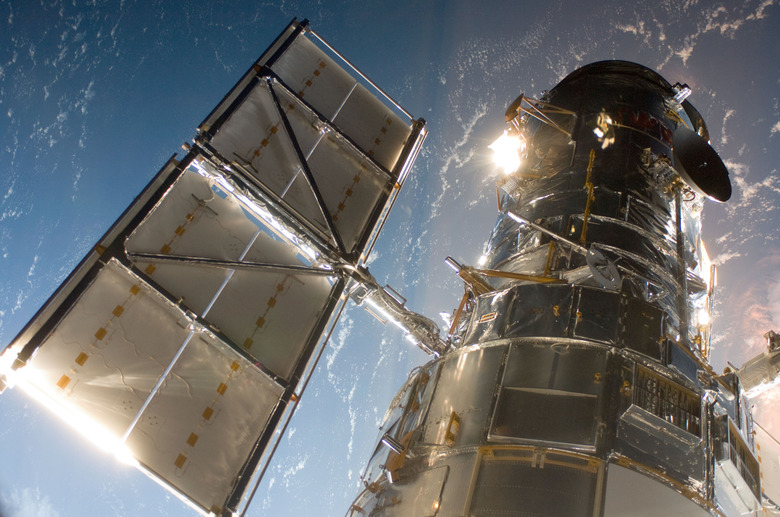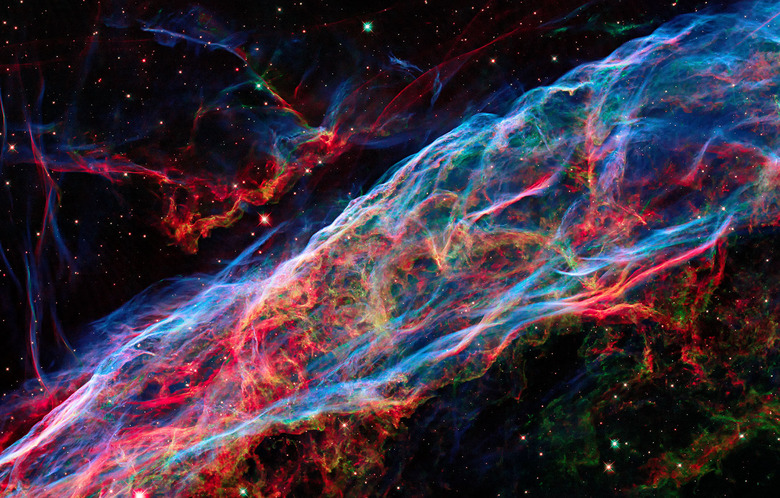Jaw-Dropping Image Combines 32 Years Of Hubble Telescope Photos Into One
NASA recently celebrated 32 years of Hubble observations. The space telescope was launched back in 1990. Since its launch, it has managed to complete over 1.4 million observations. Now, a physicist named Casey Handmer has combined all of those observations into one breathtaking image.
This is what all 1.4 million Hubble observations look like together
And here's one that's a bit easier to see on Twitter. pic.twitter.com/dlNS5jbod3
— Casey Handmer (@CJHandmer) April 19, 2022
Handmer shared the image on Twitter back in April. He originally shared it in four pieces. However, he later added another tweet with the entirety of the Hubble observations tied together.
The piece is absolutely stunning, and a stark reminder of just how big the sky beyond us truly is. In fact, Handmer says that Hubble hasn't even managed to observe as much of the sky as you might think.
"Hubble's field of view is 202 arc seconds," Handmer explained on Twitter. As such, he says that it would take around 3.2 million observations to completely cover the sky. At that point in time, over 1.4 million Hubble observations had been completed. As such, the telescope must have captured as least half of the sky, right?
Not exactly. While Hubble has taken more than 1.4 million observations, it oftentimes observes one area multiple times. Curious about how much Hubble has actually seen, Handmer gathered data from Astropy.org and began compiling it into an image. In total, he says that Hubble has only seen around .8 percent of the sky so far.
Why has Hubble seen so little?
If Hubble has already completed half of the observations that it would need to cover the sky, why has so little been observed? Well, there are a number of reasons. First, NASA didn't design Hubble to perform wide-field surveys. As such, the observations it has undergone are much more focused. Some parts of the sky are more interesting than others.
Some Hubble observations may also take longer than others, Handmer explained. And that isn't even accounting for the number of repeated observations of interesting areas. No matter how you slice it, though, the point is NASA didn't design Hubble to map the entire sky. Instead, the agency designed it to capture snapshots of specific places. To study our universe more in-depth.
It was meant to act as a way to study specific points of interest in the night sky. These points of interest include things such as black holes, galaxies colliding with each other, and other celestial anomalies that can help us understand more about our universe.
If you look at the image above, it gives a great idea of what kind of Hubble observations have been completed thus far. And, if you follow the curved line through the center, you can actually see a representation of repeated observations that have taken place through the Solar System.
Despite the fact that Hubble has only explored so little of our sky, seeing this image and all those Hubble observations together is almost mind-blowing. Just in the past 32 years, mankind has made massive strides in learning about the universe beyond our small planet.
And, with new instruments like the James Webb telescope, those strides will no doubt continue in the future.

